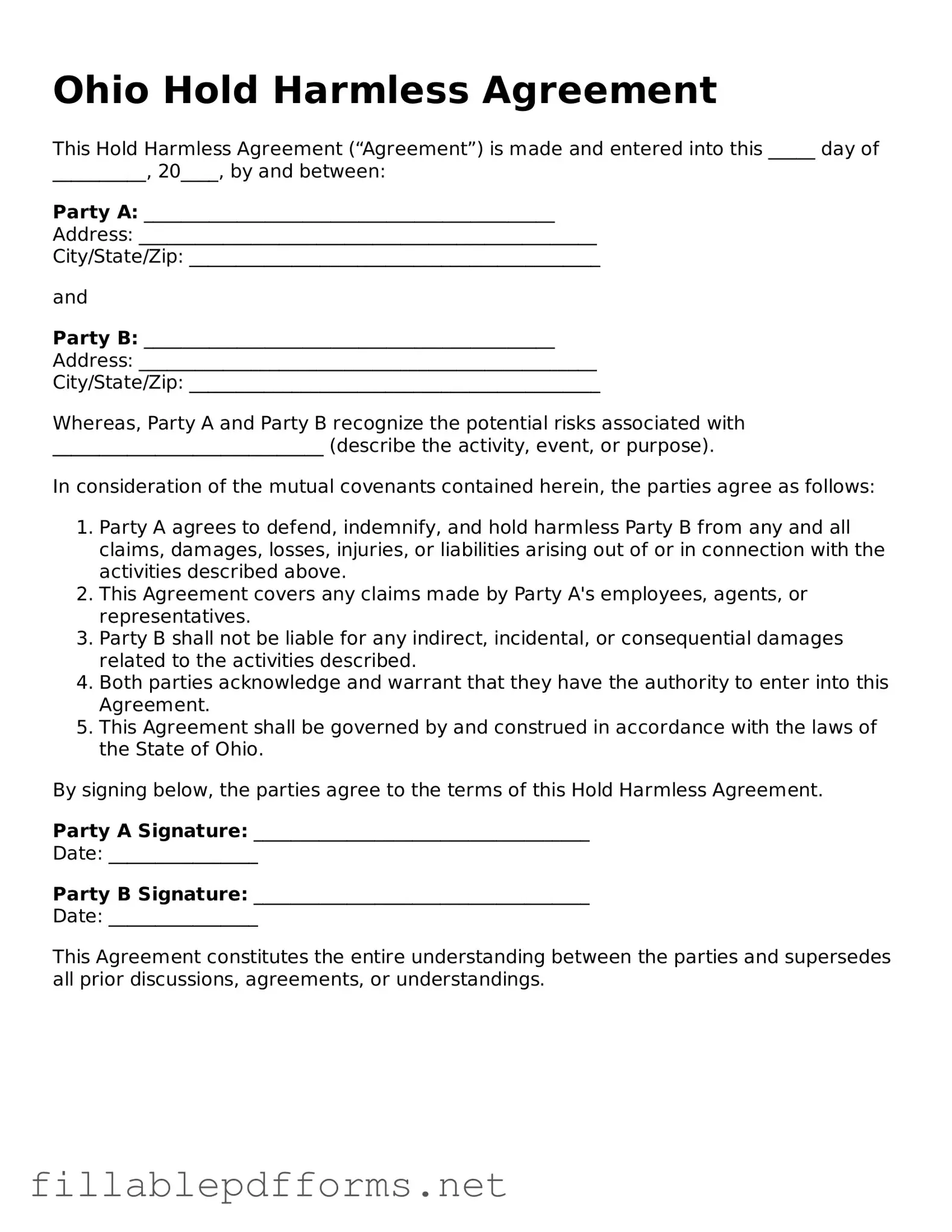Attorney-Verified Hold Harmless Agreement Form for Ohio State
The Ohio Hold Harmless Agreement is a legal document designed to protect one party from liability for any damages or injuries that may occur during a specified activity or event. This agreement is crucial for individuals and organizations looking to minimize their risk exposure while engaging in various activities. Understanding its importance can help you make informed decisions and safeguard your interests.
Launch Editor Here
